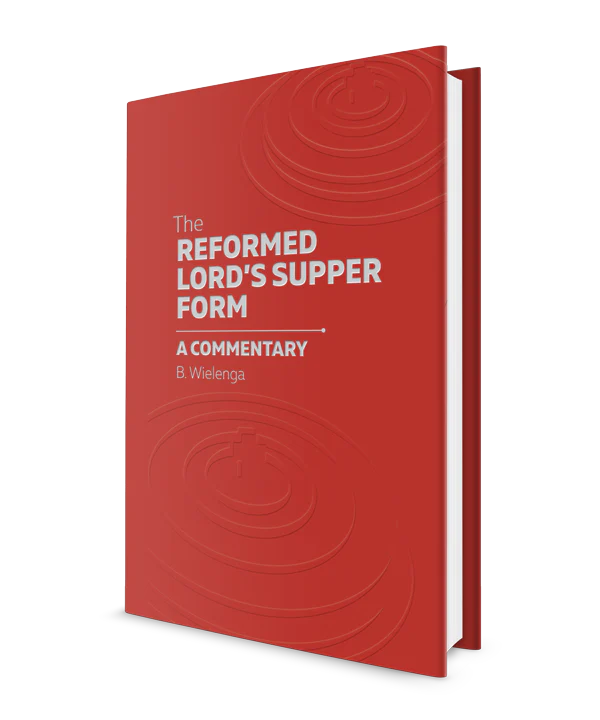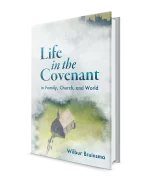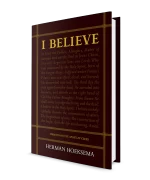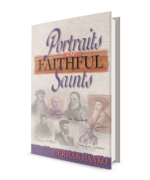The Lord’s Supper form was adopted by the Synod of Dordt (1618–1619) as the authoritative form for the administration and celebration of the sacrament of the Supper by both the Reformed churches in the Netherlands and by Dutch-speaking churches in the tradition of Dordt elsewhere in the world. Over the years the form has been adopted, translated and used by most—if not all—Reformed churches that stand in the tradition of Dordt.
The Lord’s Supper form, therefore, expresses the faith of orthodox, Reformed Christianity concerning the Supper and all the rich implications of the Supper for doctrine and life.
___________________
Bastiaan Wielenga was a minister of the word in the Reformed Churches in the Netherlands (GKN) in the early- to mid-1900s. He attended the Theological School in Kampen and earned his doctorate at the University of Heidelberg in 1899.
Book Review
The Reformed Lord’s Supper Form: A Commentary
By Dr. Bastiaan Wielenga
Translated by Dr. H. David Schuringa
Reviewed by Dan Key
In the early twentieth century, Dr. Bastiaan Wielenga, a noted Dutch theologian, wrote commentaries in the Dutch language on the Reformed baptism form and on the Reformed Lord’s Supper form. In 2016, the Reformed Free Publishing Association (RFPA) published an English translation of Wielenga’s Commentary on the Reformed Baptism Form. Now the RFPA has published Wielenga’s Commentary on the Reformed Lord’s Supper Form which was translated into English by Dr. H. David Schuringa.
The Commentary on the Reformed Lord’s Supper Form consists of nine chapters: The Introduction; Examination of Faith; The Commencement of Communion; The Authentic Examination; In Remembrance of Him; Altogether One Body; Lift Up Out Hearts on High; The Distribution of the Bread; and The Conclusion of the Service.
Chapter 1, The Introduction, includes a section titled “The Origin of the Form.” In this section you will read that Casper Olevianus, one of the authors of the Heidelberg Catechism, was the main author of our Lord’s Supper form. However, when Olevianus drew up the form, “he did so in close connection with John Calvin, using his form (The Genevan Form) as building material for his work. That’s why, more than in any other component of our liturgy, Calvin’s influence is noteworthy in the form for the Lord’s Supper.”
Chapter 2, Examination of Faith, highlights what must take place prior to one being admitted to the Lord’s Supper. Parents must fulfill their baptism vows to instruct their children. Catechization, which is a necessary and important part of that instruction, followed by profession of faith, must take place before one shall be admitted to the Lord’s Supper.
Chapter 3 is an exposition of the opening words of the form. Chapter 4 explains the self-examination section of the form. Chapter 5 is an explanation of the section that begins with “Let us now consider, to what end the Lord hath instituted his Supper, namely, that we do it in remembrance of him.” Chapter 6 explains the section that begins with “Besides that we by this same Spirit may also be united.” This chapter concerns the unity of the church body. Chapters 7-9 concern the latter portion of the form including the breaking of the bread, the pouring of the wine and the conclusion of the form.
In closing, the Lord’s Supper form expresses the faith of orthodox, Reformed Christianity concerning the Supper and all the rich implications of the Supper for doctrine and life. The form itself clearly and thoroughly explains the mystery and purpose of the Lord’s Supper. This commentary provides a more extensive explanation of the form. According to Wielenga, this commentary has as its main purpose: “to open the treasure chest of the form itself.” This commentary fulfils that purpose.
I would recommend this book to all confessing members of the church. I would especially encourage young people who are planning to make, or recently have made, profession of faith to read this book. The book provides sound and clear explanations of the sacrament of the Lord’s Supper and of the form that we use for the administration of the Lord’s Supper.









